
Search
The Renewable Energy site for Do-It-Yourselfers
Partial Shading of
PV Array
The pictures below show the effect
my PV array's power output resulting from some early
morning shading of the two east most PV panels (see picture just below).
These two panels get shaded by the nearby fence rail for a while at first
sun.
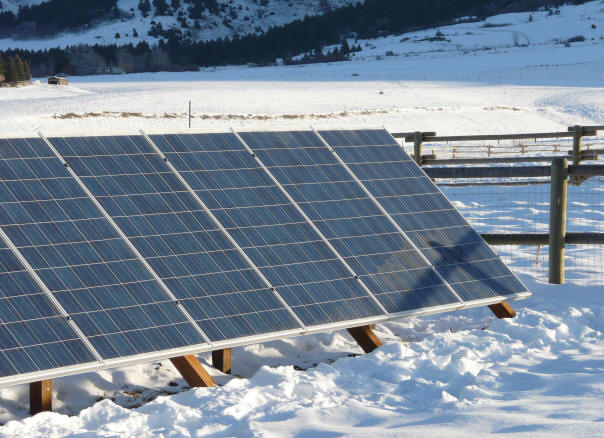
Early morning shading from fence rail/post -- (picture taken a few days
earlier)
-->There is a question below
for those familiar with how shading effects PV array output for systems that
use the string inverters.
Array ouput by panel at 9:15 am (sun
first gets on panels at 8:50 am).
All of these panel output "graphs"
are from the Enphase real time output gadget...
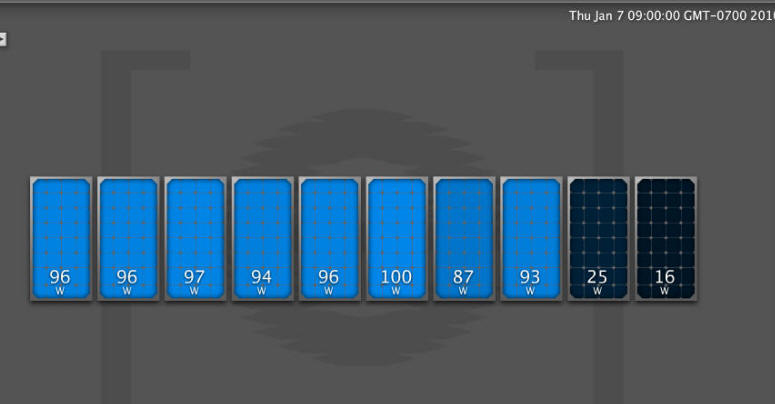
The picture above shows the output
from my array by panel at 9:15am -- just shortly after the sun first gets on the
panels. The two panels on the right (east) are experiencing some shading
from the fence rails to the east. The fence rail shadow shades less
than 10% of the panel area, but cuts the power down by about 75% compared to the
panels in full sun.
On the micro-inverter system I use,
each panel gets its own MPPT controller, so (I guess) each panel, whether shaded
or unshaded, is producing as much power as it can under the circumstances.
Question:
I wonder in this situation, what the
power output would be if all of the panels were connected as one series string
to to a conventional string inverter? That is, the shading on the two
right panels on the micro inverter system is bringing the power down from about
960 watts (96 watts per panel avg) to about 809 watts -- what would the power
output be at this point for the same panels on a string inverter?
| |
An answer?
I put this question up on the
Northern Arizona Wind & Sun Forum (a very knowledgeable bunch).
This is a link to the post and answers...My very non-expert
reading of the answers for how a string inverter would handle this
shading situation says that there are two basic possibilities:
1- The shaded panels drop the voltage on the series string of PV
panels to the point where the total voltage goes below the minimum that
the inverter allows. This would cause the inverter to go offline
until the voltage goes pack up -- the array would produce zero power in
this case. A dramatic result indeed.
I think this would definitely be something to consider if you get
significant shading part of the day -- it would be bummer to loose the
full array output when most of the panels are still in good sun.
2 - For the case where the array voltage stays within the range
acceptable to the inverter, the result is hard to predict, and depends
on the details of the shading, and the design of the PV panels and their
bypass diodes.
The way I read it, if the shaded panels did not have bypass diodes,
then they would severely limit the production of the entire string
-- since all the panels in the string are in series, one panel limiting
current would limit the full string. But, the PV panels do have
bypass diodes, so the current from the working panels is passed through
the shaded panels. How much of a hit you take depends on the diode
configuration, the shading, and perhaps the details of the MPPT.
I guess it might be fair to say that the micro inverters will do better
in this part shaded situation, but its hard to tell how much better.
Here are the results from an actual
test comparing two indentical strings of PV panels, one with MPPT on
each individual PV panel, and the other with a single string
inverter using MPPT for the full string...
The result does seem to verify the value of having MPPT for each PV
panel in cases of partial shading of a small part of the array.
If you have any further thoughts on this, or have experimented with
shading on a string inverted connected set of PV panels, I'd like to
hear about it
Gary...
Gary |
Array output by panel at 9:30am

Shading still effecting most east
panel.
Array output by panel at 9:50am
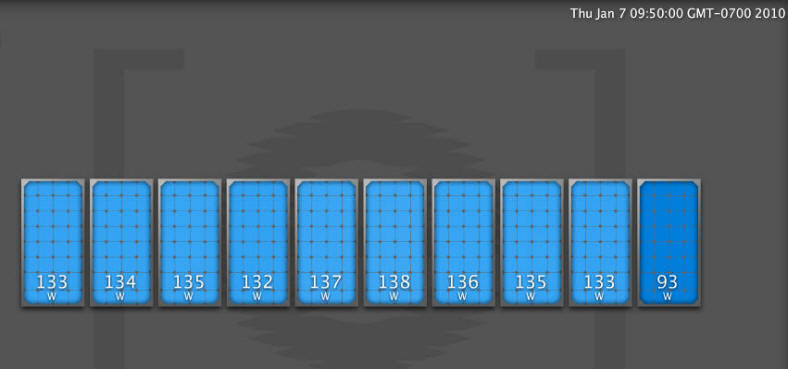
Effect of shading is nearly gone
Array output by panel at 10:00am:
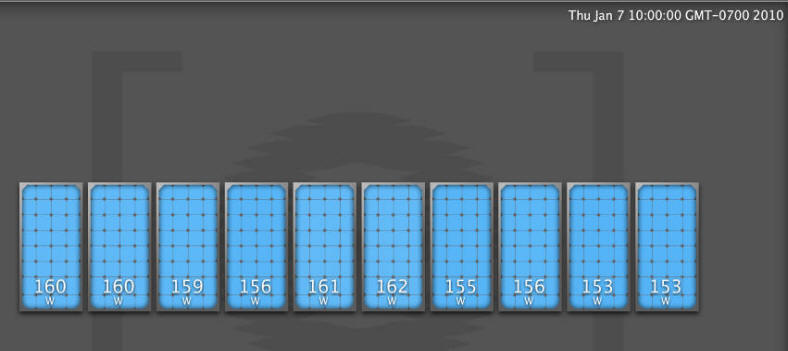
So, by this time, the shadow is
completely off all the panels.
I realize that the net of effect of
shading in my case is very small as a fraction of the full day output, but I
just thought it was interesting to see the actual effect of shading by panel --
yet another way to waste more of your time looking at the real time output :)
Weather: Sunny, no clouds,
temperature -12F.
Sun came onto the panels at 8:50 am
-- total array output just before this was only 50 watts from diffuse light.
Just for reference, here is the ouput
by panel around noon:
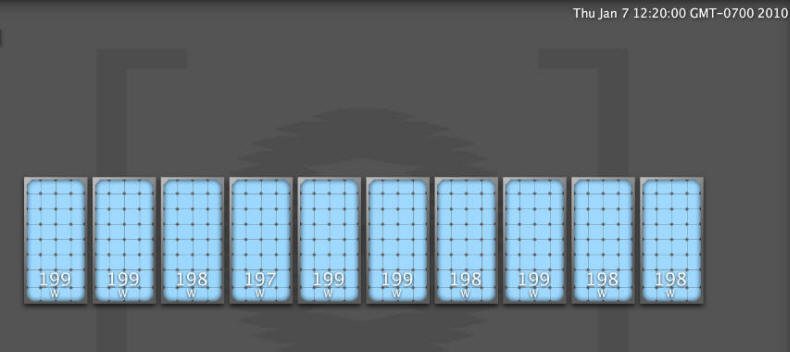
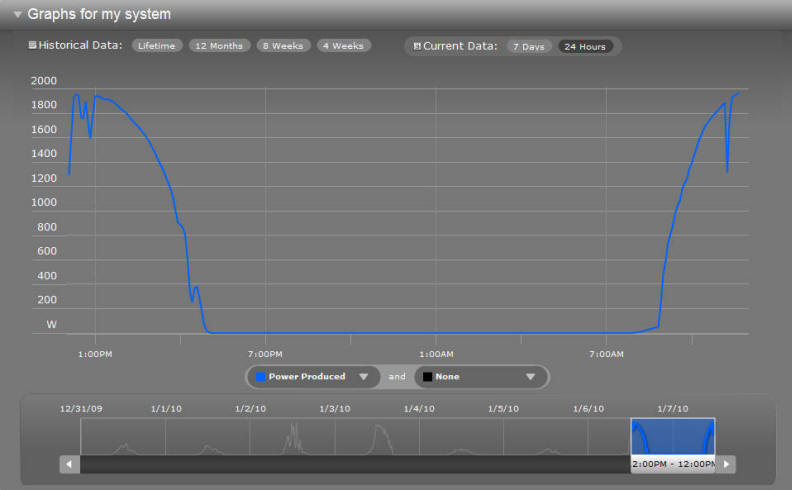
January 7, 2010,







